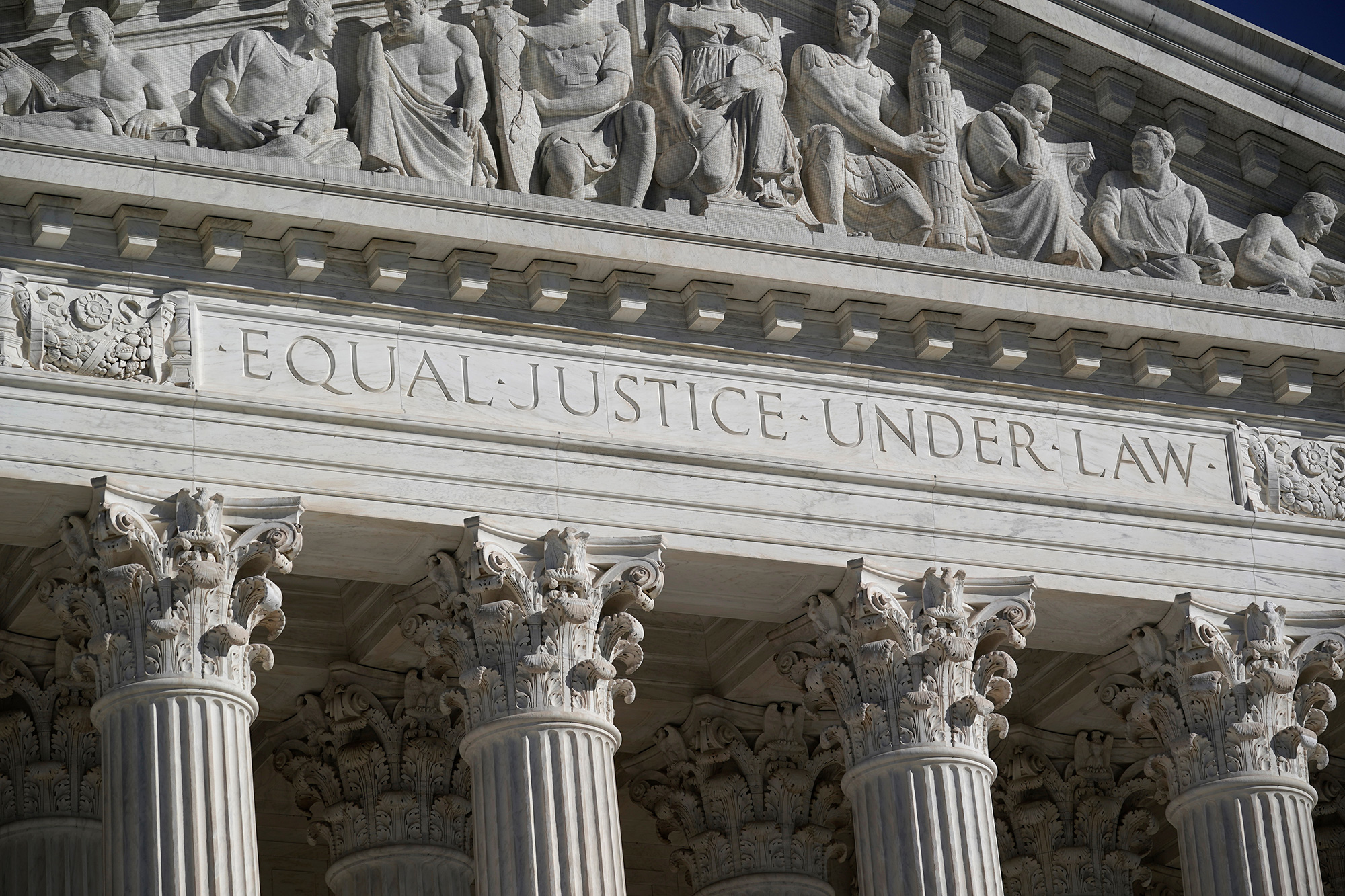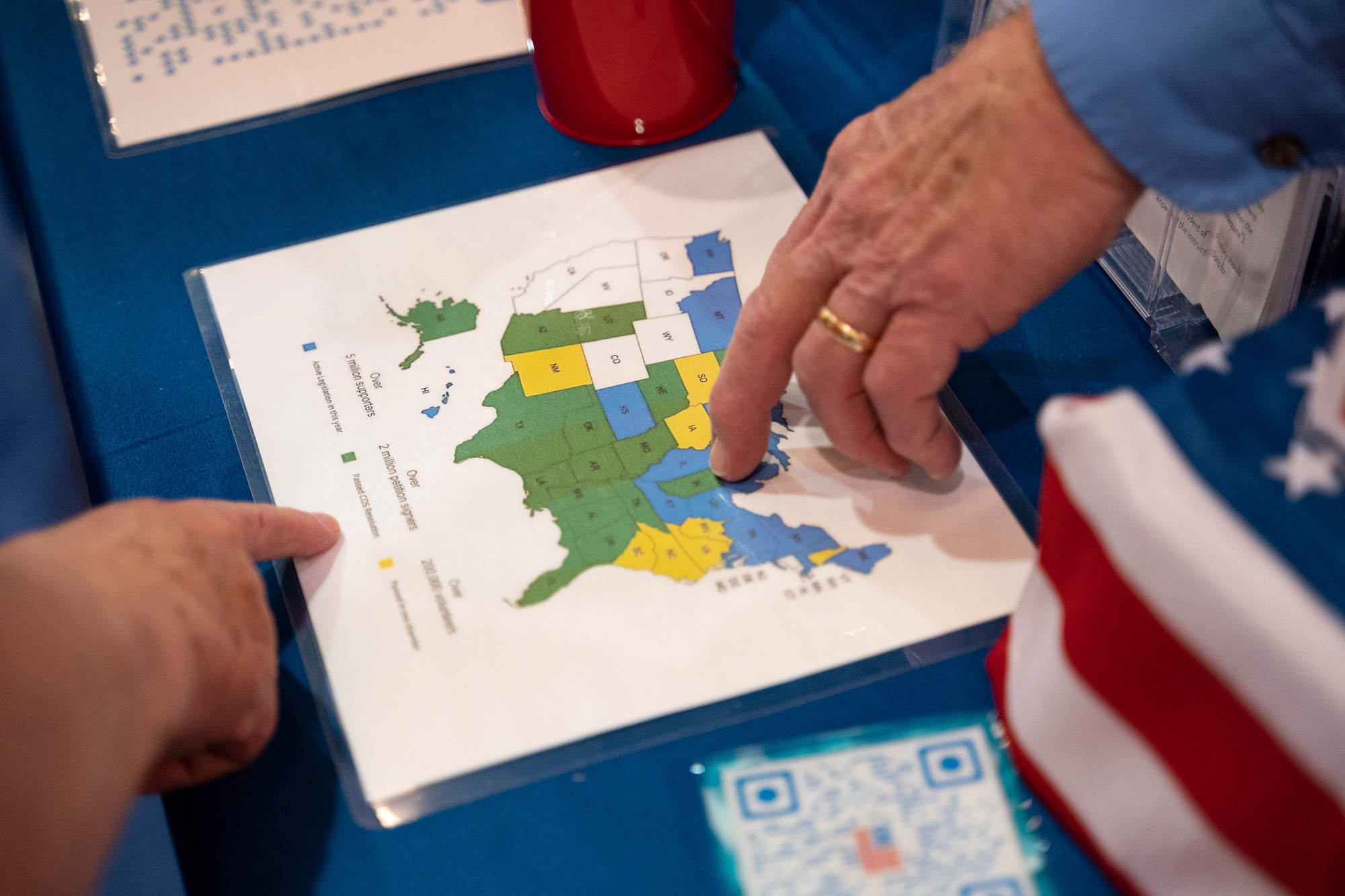What Russia’s latest nuclear missile test and President Trump’s response mean for the world
Washington and Moscow are dusting off the Cold War playbooks.
The U.S. recently announced new sanctions on Russian oil and gas companies, hoping to bankrupt and ultimately end Russia’s unprovoked invasion of Ukraine.
Apparently, Russian President Vladimir Putin wasn’t deterred. Just days after the sanctions were announced, Russia successfully tested a new nuclear-powered missile called “Burevestnik” which they claim can’t be stopped by America’s missile defense systems.
Asked about the nuclear test, President Trump warned “We’re not playing games with them.” And he meant it: the President said the U.S. would test our own nuclear weapons, for the first time in over three decades.
These moves have reignited fears of a new nuclear arms race, the first in a generation. Nations are signaling they’re ready to cross lines that have held for decades. Here’s what’s at stake:
What Is Nuclear Weapons Testing?
Like the name suggests, nuclear weapons testing is detonating a nuclear device to make sure it still works. Most of America’s nuclear stockpile were produced over 40 years ago, so testing helps make sure those weapons will be there for us if we ever need them.
Nuclear testing also serves another, arguably more important, purpose: sending a message. Every test is a signal to the rest of the world that a country’s nuclear arsenal is active and ready. That’s why North Korea tests nuclear weapons, and it’s what Russia and the U.S. are trying to do this time around.
But nuclear testing produces radiation, leaving lasting environmental damage. That’s why most countries – including Russia and the U.S. – haven’t done a full-blown test in decades.
Instead, modern countries focus on “nuclear-capable testing,” testing the missiles, submarines, and bombers that could carry nuclear warheads without actually detonating one. Russia’s recent “Burevestnik” test falls into this category, and the U.S. frequently test-fires unarmed Minuteman missiles – the same ones that would deliver a nuclear strike if ever needed – into the Pacific to make sure they’re up to speed.
Countries also use advanced computer simulations to model how nuclear explosions would unfold, allowing scientists to test weapon reliability without actually setting one off. These virtual tests, combined with small-scale lab experiments, have largely replaced live detonations in modern nuclear programs.
It’s this distinction that makes President Trump’s recent order unclear. Secretary Chris Wright – whose Energy Department is responsible for nuclear weapons testing – claims there won’t be any nuclear tests anytime soon. Instead, Secretary Wright insists, the President was referring to nuclear-capable tests, which falls under the Department of Defense’s jurisdiction.
But the President is being vague about which type of testing he was referring to. Some military analysts believe this is an intentional strategy to keep adversaries on their toes; others see it as a lack of coordination and communication within the White House.
The History of Nuclear Testing
The world’s first nuclear test happened 80 years ago right here in America. Code-named “Trinity” and later depicted in Oppenheimer, it marked the beginning of the atomic age – and a global race to build, test, and stockpile nuclear weapons.
In the ensuing decades, eight countries would follow suit, conducting more than 2,000 nuclear explosions in total. The U.S. accounted for just over half of those tests (1,030), while Russia conducted 715, and the rest were spread between France, the U.K, China, North Korea, India, and Pakistan.
There is speculation that another country, perhaps Israel or South Africa, secretly tested a nuclear weapon in 1979. A U.S. “Vela” satellite detected an unnatural flash of light off the southern coast of Africa, about halfway between Africa and Antarctica. Now known as “The Vela Flash,” the CIA gave it a 90% chance of being a nuclear explosion, and many independent monitors agreed. Then-President Jimmy Carter believed Israel was responsible for the test and that South Africa assisted them; but to this day, no one has taken responsibility for the Vela Flash.

By the 1960s, the fallout was both literal and political. Growing fears about radioactive contamination in the air, the oceans, and even people’s bloodstreams sparked a global outcry and a movement to end testing. It was partially successful: in 1963, the U.S., U.K., and the Soviet Union signed the Limited Test Ban Treaty which banned nuclear explosions in the atmosphere, underwater, and in outer space. All future tests would be moved underground.
Underground testing continued for decades, but at a slower pace. In the 1990s, the United Nations introduced a Comprehensive Nuclear-Test-Ban Treaty to end all nuclear testing. Most countries, including the U.S. and Russia, signed on to the Treaty. While it never officially went into force, nearly all countries have abided by it and no longer conduct nuclear tests. Only three countries – India, Pakistan, and North Korea – have tested weapons since the treaty was adopted.
The last confirmed nuclear explosion on Earth was carried out by North Korea in 2017. Some, including President Trump and CIA Director John Ratcliffe, claim that Russia and China have carried out secret tests in recent years. But there’s no public evidence or international consensus to support those claims.
For now, the moratorium on full-scale nuclear testing has held firm. But as the U.S. and Russia edge closer to reviving their testing programs, that decades-long restraint may soon be tested, too.
Which Countries Have Nukes?
The eight countries that have officially tested nuclear weapons – the U.S., Russia, France, the U.K, China, North Korea, India, and Pakistan – are also the only eight countries that officially possess nuclear weapons.
Israel, the country suspected to be behind the Vela Flash nuclear test, officially maintains a policy of “nuclear opacity” – they don’t admit to having nuclear weapons, but they also don’t deny it. This is part of a strategy to keep Israel safe. By keeping the details vague, no one knows exactly how many warheads Israel has or how powerful they might be – and that uncertainty forces Israel’s enemies to assume the worst.
Israel is widely believed to have at least 90 nuclear weapons, which would make it the second-smallest arsenal on the list:

While the global stockpile today is much smaller than the Cold War peak, the numbers are starting to trend up again.
The U.S. believes that China is on pace to have 1,000 nuclear warheads by 2030 – nearly doubling its arsenal in just five years. The U.S. and Russia have been retiring and dismantling their weapons for decades, but now both countries have slowed the pace of retirement. And Iran was suspected of pursuing nuclear weapons before the U.S. and Israel struck their production facilities earlier this year.
After thirty years of relative restraint, the nuclear clock may be ticking faster again.
A Global Threat
Iran’s nuclear ambitions, China’s expanding arsenal, saber-rattling between Russia and the U.S. … the stakes are not just regional, they’re global.
The bombs dropped on Hiroshima and Nagasaki destroyed entire cities and killed over a hundred thousand people. That was over 80 years ago; today’s weapons are much more powerful.
A single U.S. nuclear-armed submarine today carries seven times more firepower than all the bombs (nuclear and standard) dropped during World War II. The U.S. has ten of those nuclear submarines deployed around the world at any given time.
That means right now, cruising silently beneath the oceans, the United States alone has the equivalent of seventy World War IIs worth of explosives ready to launch. And that’s just from the submarines. Add in the other two legs of America’s “nuclear triad” – bombers and land-based intercontinental missiles – plus what the other eight nuclear nations are working with, and the scale becomes almost unimaginable.
A 2019 simulation from Princeton projected that 34.1 million people would die in a full-scale nuclear war between Russia and the U.S. Even a “limited” war between India and Pakistan would kill 12 million instantly.
Princeton’s simulation also showed that using just 1% of the world’s nuclear weapons could block out sunlight, which would collapse our food systems and put up to two billion people at risk of starvation.
A Better Path Forward
We’re not doomed. History has proven time and time again that countries can step back from the brink and work toward denuclearization.
After the fall of apartheid, South Africa announced that it had secretly built nuclear weapons – and that they had since been destroyed. To this day, South Africa is the only country to voluntarily dismantle its entire nuclear arsenal.
In Libya, decades of diplomatic and economic pressure forced dictator Muammar Gaddafi to abandon his secret nuclear program in 2003. In exchange for international aid and lifting sanctions, Gaddafi allowed international agencies in to dismantle all of Libya’s nuclear production facilities.
When the Soviet Union collapsed in 1991, four new countries suddenly found themselves sitting on nuclear arsenals: Ukraine, Belarus, Kazakhstan, and Russia. Within five years, three of them – Ukraine, Belarus, and Kazakhstan – had sent every warhead back to Russia for dismantlement, in exchange for security assurances and international aid (although Russia later broke its promises by invading Ukraine).
These episodes prove disarmament is always an option, even if it takes some diplomatic pressure. That same path is still open today. The world doesn’t have to live on the edge of nuclear catastrophe. We’ve done it before, and we can do it again.
Related
Peyton Lofton
Peyton Lofton is Senior Policy Analyst at No Labels and has spent his career writing for the common sense majority. His work has appeared in the Washington Examiner, RealClearPolicy, and the South Florida Sun Sentinel. Peyton holds a degree in political science from Tulane University.





You must be logged in to post a comment.